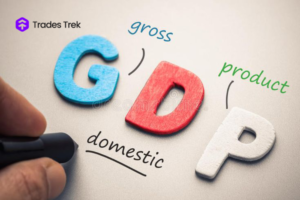The stock markets have been fairly volatile over the past few years. Although some people experienced incredible gains as a result of soaring stock prices, others experienced losses as a result of making incorrect price predictions. And with significant global developments still going on, mainly those who have a strong grasp of how the stock market works and how to pick the correct individual stocks will be able to build wealth.
Finding good stocks and the correct time to invest in them is essential to a successful financial strategy. If investors can forecast the rise and fall of the stock market, they will succeed in the stock market.
It can be difficult to decide whose advice to take even though thousands of experts claim to know the secrets behind the rise and fall of the stock market. Investors should know two prices: the current price of the investment they possess or intend to buy and its expected future selling price.
Learning to pick the appropriate stocks and spot indicators that can help you foretell which stocks will rise or collapse is the only way to increase your confidence in your stock picks. However, how can you learn to read the financial market and predict where the current stock values will go? And while attempting to make more educated selections, what can you deduce from the pricing history?
Most investors ask these questions, and many analysts offer a variety of responses that may confuse a novice investor. One thing is certain: while many things influence stock prices, the market’s supply and demand ultimately determine the price at any particular time. Let’s examine the causes of the rise and fall of the stock market in more detail.
Factors that Influence the Price Rise and Fall of Stock Markets
Fundamental Factors
Based on a company’s earnings and profitability from creating and selling goods and services, one sort of research called the fundamental factors is a type of analysis that can assist you in forecasting the rise and fall of the stock market. We can “predict the fair price” of stocks in this way. When a stock’s fair price is determined, investors can compare its market price to determine whether it is “overpriced.”
Technical Factors
On the other hand, the chart patterns, momentum, and investor and trader behaviour tie technical factors to a stock’s price history. This factor explains why pricing is a factor in every facet of technical analysis.
What are the indicators of a good stock?
- Recognize a Stock’s Bottom
When a stock reaches its absolute bottom and lowest price, that is when it is the perfect moment to buy. This is the origin of the adage “buy low, sell high,” which explains why it has evolved into the finance industry’s most overused phrase.
The challenging element is correctly predicting whether the stock will stay strong and whether it will ever recover.
When a stock is in terminal decline, it signifies that most investors have jumped ship and determined the stock is not worth the risk. Many of these investors have taken substantial losses to exit their positions as quickly and damage-free as possible. And that implies that investing in declining stocks will always carry a high risk.
The good news is that you can reduce risks and get amazing deals on stocks generally priced at a premium if you know what to search for.
The company’s industry is an excellent place to start looking. Even though the price is tempting, you should hold off on buying if a crisis has sent a whole industry into a negative cycle because the stocks might take a while to recover.
However, if a stock declines for reasons unrelated to its industry and you have confidence in the firm to survive, you can obtain a nice deal and watch the stock price recover quickly.
- The Stock’s Volume
Another useful tool for determining whether a stock has bottomed out is its volume. The stock may be poised to stabilize and rise again if the volume goes down because it suggests there aren’t as many sellers left.
- The Stock’s Time Frame-Wide Average
There is a straightforward method to determine if the stock will increase or decrease under normal market circumstances: 20, 50, and 200-day simple moving averages.
The stock price will decline in the next few days if the red line hits the green line and moves down.
The stock will increase over the next few days if the red line connects and moves upward from the line.
This trend has a long history of success and is still strong today. However, in unusual market circumstances, such as when there are any bad opinions of the stock, results are announced, government policies are announced, news or rumours are spread, and a warlike scenario in the nation will impact the stock price.
After learning some signs of a strong stock, let’s examine advice on deciding when to invest in stocks.
- Changes in the Holdings of Mutual Funds
The price of the stocks mutual funds invest in is inextricably tied to their trading activity. The prices of equities that mutual funds add or sell are automatically impacted.
Mutual funds can have a significant short- and long-term impact on stock prices due to the scale of their investments. On any given day, mutual fund trading can potentially raise or lower stock prices. Additionally, the herding behaviour of mutual funds and other sizable institutional investors can produce protracted trends that affect the price of a stock over time.
Advice on when to buy stocks
When a stock bottoms down and hits its absolute lowest price, that is the only opportunity to buy it. This strategy originates from the adage “buy low, sell high,” which explains why it has evolved into the finance industry’s most cliche.
The challenging part is correctly predicting whether the stock will stay strong and whether it will ever recover.
When a stock is in free fall, most investors have abandoned ship and determined the stock is not worth the risk. Many of these investors have taken substantial losses to exit their positions as quickly and damage-free as possible. And that implies that investing in declining stocks will always carry a high risk.
The good news is that you can reduce risks and get amazing deals on stocks generally priced at a premium if you know what to search for.
The company’s industry is an excellent place to start looking. Even though the price is tempting, you should hold off on buying if a crisis has sent an entire industry into a negative cycle because the stocks might take a while to recover.
However, if a stock declines for reasons unrelated to its industry and you have confidence in the firm to survive, you can obtain a nice deal and watch the stock price recover quickly.
When determining whether a stock has bottomed out, the previously indicated stock volume is another reliable indicator. The stock may be poised to stabilize and rise again if the volume goes down because it suggests there aren’t as many sellers left.
To Sum Up
Lastly, keep a close eye on how people react to the stock and the news when watching declining equities. Most investors frequently overreact to news, which can lead to volatility. Nevertheless, over time, the stock’s intrinsic value triumphs over whatever trends or media hype could have influenced it in the past. Additionally, there is no way to predict the market with 100% accuracy; instead, the advice above merely serves to reduce risk and aid decision-making.




